About Louis Roederer
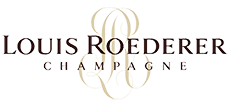
The Roederer brand occupies a slightly odd position in the Champagne league table. You will not find it in the top 10, among the most obviously recognised brands, although it is much loved by true Champagne aficionados. And yet, it produces probably the most famous and brand image conscious Champagnes of them all, Cristal – beloved of show business personalities and VIPs. It’s an interesting dichotomy, with classic Roederer lovers eschewing the ‘bling’ of Cristal and firmly focusing on the lesser known, but elegant cuvees, whilst celebrities and ‘wannabees’ rely on status brands and symbols, one of which is now definitely Cristal Champagne.
The Roederer brand produces some of the most elegant styles of Champagne of any of the ‘grandes marques’ houses, yet the name is often eclipsed by its international star, Cristal. Owning over 210 hectares of vines, Roederer unusually produce all their vintage Champagnes from their own grapes and a majority of the non-vintage also, thus facilitating the establishment of a ‘house style’.
What's The Background To Louis Roederer?
Founded in 1776, the company, originally known as ‘Dubois’, was purchased in 1833 by Louis Roederer and renamed. There were many famous, laudable and innovative Champagne producers during this period, who all deserve recognition, however Louis Roederer was one of the fastest movers, rapidly growing the business, not just in France, but internationally, especially in Russia. By 1878 the house was selling over 2.5 million bottles of Champagne a year, accounting for almost one 10th of the total Champagne production.
The key moment in the brand’s history occurred in 1876, when Tsar Alexander 2nd requested a special cuvee to be produced exclusively for his court; bearing in mind, that this Tsar had a remarkable fondness for Champagne, enjoyed and tried the majority of the key brands available, it is testament to Roederer that this house was chosen to fulfil the Tsar’s desire for a unique and prestige cuvee. This was duly produced – originally a sweet blend, to satisfy the tastes of the Russian court, it was named ‘Cristal’ due to its heavy, clear crystal, bottle.
It is testament to the brand’s strength and the company’s focus, that when the market for Cristal in Russia died in 1917, when the revolutionaries took over, the company continued to focus on its roots and beliefs and changed the direction of its strategy.
The company hit serious problems following this shift, exacerbated by the first and then the second world war. As with so many of the stories of the historic Champagne houses, there was a single person who helped save the business, one of the strong band of ‘Champagne widows’, who single-handedly rescued their family estates and developed them. In this case Camille Roederer took over the family business and created a legacy, during a period of conflict and turmoil, by purchasing vineyards for sale whenever she could, thus ensuring continuity and security. To this day, Roederer own one of the highest proportions of own vineyards among other Champagne houses.
By the 1960s, Camille had rebuilt the business into one of the most profitable and successful Champagne houses in the region, and had re-established Cristal, the world’s most sought after Champagne, not just in Russia, but internationally, based on the original concept.
In recent times, the company has been run by grandson, and then great grandson, from the Rouzaud family. It is during this time, that the serious business of acquisitions began, further cementing the company’s reputation as a wealthy and profitable player. Establishing Roederer California to produce sparkling wines, closely followed by the acquisitions of non-Champagne wine properties, has reinforced this. Estates such as Domaines Ott, Ramos Pinto, Deutz Champagne and Chateau Pichon Lalande ably demonstrate this and the company is one of the most secure financially in the industry.
What Styles Of Wine Does Louis Roederer Make?
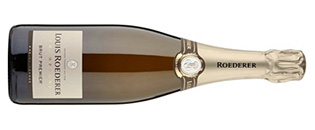
Louis Roederer 'Collection' Brut Champagne – In 2021 the Collection range was launched with Collection 242, replacing the original Brut Premier. Collection aims to combat the warming affects of climate change on the Champagne region. Described as "fighting for freshness" by Jean-Baptiste Lécaillon. The wines are made from a perpetual reserve, where only fresh enough wines are added. The end result is the perpetual reserve can be used to keep the Champagne fresh and with good age characteristic.
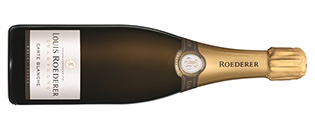
Louis Roederer Carte Blanche NV – an off dry, richer style, with a higher degree of sugar dosage, yet made in a mirror image of the house style.
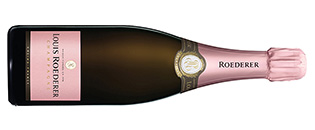
Louis Roederer Brut Rose – a firm, structured Rose, fuller than many, but with real personality, this wine is made from top vineyard’s grapes, and by the ‘saignee’ method, extracting the colour from the grapes; with 70% Pinot Noir to give fullness, body and seriousness, it is balanced by the softness and delicacy of 30% Chardonnay in the blend.
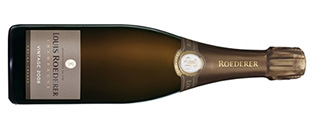
Louis Roederer Brut Vintage – produced only in exceptional years, the vintage blend, once again focusses on the strength, structure and depth of the Pinot Noir, with 70% in the blend, supported by 30% fruity, more delicate and fresh Chardonnay.
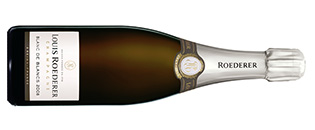
Louis Roederer Blanc de Blancs – for this 100% Chardonnay blend, Louis Roederer have selected grapes from their 2 best vineyards in the Cotes de Blancs, Avize, and Le Mesnil. Stylish, gentle and supremely elegant, this is a favourite of Champagne aficionados, and those who enjoy complex, refined and subtle yet structured styles of Champagne, which don’t need to shout their presence.
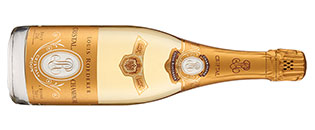
Louis Roederer Cristal – Cristal, for many, is the absolute king of Champagnes. It has incredible complexity, displaying subtle notes of pears, flowers, spices, mint, minerals and oak, coupled with extreme elegance. This beautifully sculpted Champagne possesses clarity, but with the additional depth of fruit and complexity you expect from one of the world's finest Champagnes.
Read more about Louis Roederer Cristal >